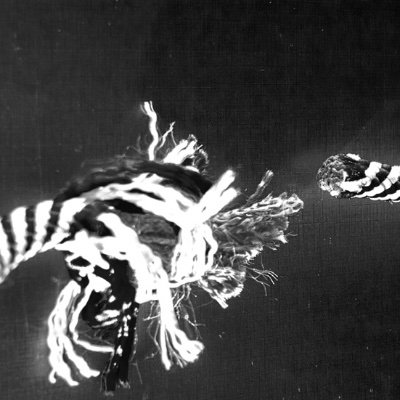
Geoff Macintyre
@gjmacintyre
Followers
897
Following
623
Media
39
Statuses
276
Computational oncology, PI at CNIO, Co-founder at Tailor Bio. Chromosomal instability, tumour evolution, cancer prevention, diagnostics, copy number signatures
Madrid, Spain
Joined July 2012
Fabulous resource to explore how different genes affect double stand break repair outcomes. Congrats to @CortesLab. Glad to be involved and to collaborate with labs across @CNIOStopCancer
Our REPAIRome study finally out today in @ScienceMagazine !!! https://t.co/LOJHQa4Yqe
0
0
6
Cancer is an evolutionary disease, but does knowing a cancer’s evolutionary past help predict its future? Out today in @Nature, we learnt the evolution of 2000 lymphoid cancers and found it was highly correlated with clinical outcomes! (1/7, link below)
11
122
599
Excited to share our new paper in @Nature, led by @PiotrekPaw_ @KristianaGrigo4 ! 🧬 We developed a new method, ALPACA, to untangle the co-evolution of single nucleotide variants and copy number changes in tumours. Check it out:
nature.com
Nature - A study presents ALPACA, a computational method for inferring clone- and allele-specific copy numbers of individual clones from multi-sample bulk DNA-sequencing data, and demonstrates its...
2
44
163
12/ Want to know the genesis story of this research? Check out the “behind the paper” post
communities.springernature.com
Some of the most successful cancer drugs - chemotherapies - are still being administered in the same way they were 40 years ago: one-size-fits-all. New diagnostic advances should allow us to be more...
0
0
1
11/ Kudos to Joe, @LauraMadridMarq, @BHFHepthatlon & co-authors for driving this work! Thanks to patients and funders for their support @CNIOStopCancer @SaludISCIII @CienciaGob @BecariosFLC @illumina @innovateuk @CUH_NHS @TailorBio @CR_UK
1
0
2
10/ What’s next? We’re funded by @mintradigital #NextGenerationEU for analytical validation and will be ready to run prospective trials in 2026. From organoids to algorithms to patients: precision chemo is possible!
1
0
0
9/ To ensure a flexible pathway to the clinic, we also tested biomarker reproducibility in ctDNA samples and TSO500 panel data, bringing us closer to real-world implementation
1
0
0
8/ It worked! We emulated trials to validate resistance predictions to platins, taxanes & anthracyclines across ovarian, breast, prostate & sarcoma
1
0
0
7/ Next step? A prospective trial? We tried but couldn’t! No one wanted to run/fund a trial using “old” chemos. So we had to get creative. Luckily, as chemos are widely used, there was a wealth of real-world data eg TCGA & @HartwigMedical to emulate biomarker trials - even RCTs!
1
0
1
5/ Next step? Proof-of-concept using retrospective data from 50 ovarian cancer samples. Ovarian cancers were ideal as all 3 chemotherapies are routinely used. We focused on predicting resistance. Why resistance? Because it allows patients to avoid toxic side-effects
1
0
0
4/ We focused on optimising 3 CIN signature-based biomarkers to classify patients as resistant or sensitive to 3 commonly used chemotherapies: platins, taxanes or anthracyclines. Our goal: to optimise biomarker thresholds to use pan-cancer
1
0
0
3/ These prelim data showed correlations between CIN signatures and chemotherapy response. As the full spectrum of CINsigs can be quantified in a tumour using a single genomic test, we hypothesised that CINsigs could predict resistance to multiple chemotherapies at diagnosis
1
0
0
2/ Back then, we already had preliminary data suggesting these CIN signatures may be useful as therapy response biomarkers, mainly via synthetic lethality with the mechanism of action of the drug (CIN signature➡️defective pathway➡️dependency, which the drug exploits)
1
0
0
1/ 3 yrs ago we developed a computational framework to decode chromosomal instability https://t.co/mXAeYNNZVg: input a tumour genome➡️output CIN signatures. As these CIN signatures represent different causes of DNA damage, they provide a read out of defective pathways in a tumour
nature.com
Nature - Copy number signatures characterize different types of chromosomal instability and predict drug response.
1
0
1
🚨Chemo treatment upgrade!🚨 Check out our approach to modernise chemotherapy treatment published today in @NatureGenet. From @CNIOStopCancer @TailorBio @CR_UK
https://t.co/IgUxlRYBgm More details 👇
2
23
45
0
1
4
1
1
4
We hope this study will inspire further forecasting efforts across other molecular alterations. Thanks to all members of the @gjmacintyre lab & collaborators @PazAresLab #PPCG 14/
1
0
1
TL;DR Forecasting oncogene amps & tumour suppressor dels is feasible! This can refine risk stratification and anticipate treatment resistance, paving the way for earlier, smarter and more personalised cancer care. There is much more in the preprint so check it out! 13/
1
1
2





